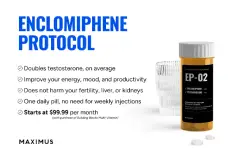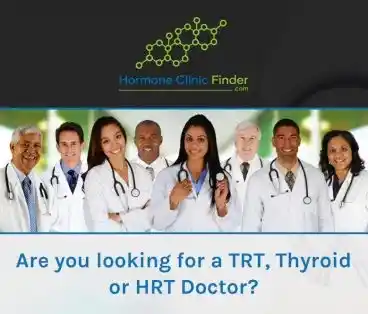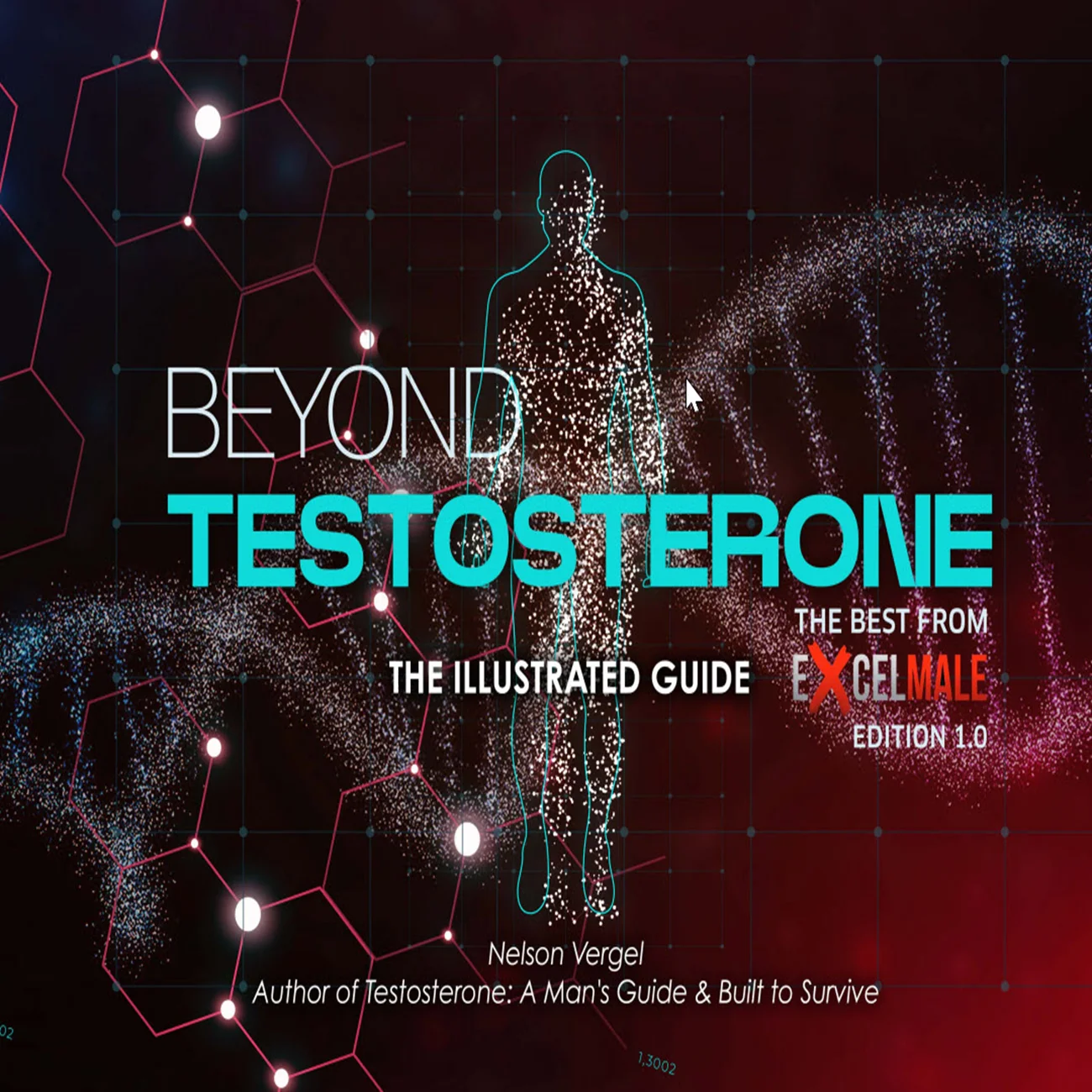Sex hormone-binding globulin (SHBG) is a homodimeric glycoprotein produced by the human liver and secreted into the systemic circulation where it binds with high affinity sex steroids regulating their availability in blood and accessibility to target tissues. Plasma SHBG levels are altered in metabolic disorders such as obesity, anorexia, and insulin resistance. Several reports have shown that diets in terms of total calories or fat, fiber, or protein content can alter plasma SHBG levels. However, there are many components in a diet that can affect SHBG gene expression in the liver. In order to unravel the molecular mechanisms by which diets regulate SHBG production, it would be necessary to analyze single diet components and/or nutritional factors. This review summarizes the recent advances in identifying different nutritional factors regulating SHBG production and the related molecular mechanism, as well as the clinical implications.

1. Sex Hormone-Binding Globulin Background
1.1. Human Sex Hormone-Binding Globulin Gene
The human SHBG gene is located on chromosome 17p13.1 and it spans up to 11-kb containing two known transcription units: a) first transcription unit or proximal promoter (4.3-kb) that is responsible for driving the expression of the SHBG gene in the hepatocytes that secrete SHBG protein into the circulation[1]; b) second transcription unit containing an alternative promoter which drives the expression of the SHBG gene in germ cells of the testes producing a smaller isoform than the plasmatic SHBG that accumulates in the acrosome of human sperm[1] (Figure 1)
1.2. Transcription Factors Regulating Hepatic SHBG Gene Expression
The human SHBG proximal promoter isa TATA-less promoter that contains different footprint (FP) regions which have been well characterized during the last decade (Figure 1):
• FP1 region: chicken ovalbumin upstream promoter transcription factor (COUP TFI) and hepatocyte nuclear factor 4 alpha (HNF-4), which represses and activates SHBG transcription, respectively.[2]
• FP3 region: HNF-4, estrogen receptor alpha (ER), and constitutive androstane receptor (CAR) activate SHBG transcription, while peroxisome proliferator activated receptor gamma (PPAR) inhibits SHBG transcription.[2,3]
• FP4 region: upstream stimulatory factor 1/2 (USF1/2) activates SHBG transcription.[4]
1.3. SHBG Function and Role as Biomarker of Metabolic Disturbances
1.4. Dietary Composition and SHBG
2. SHBG Regulation by Nutritional Factors and Associated Molecular Mechanisms
2.1. Carbohydrates
2.2. Olive Oil
2.3. Red Wine (Resveratrol)
2.4. Caffeine
3. Clinical Implications and Future Perspectives
One of the most important lessons of recent years has been that apart from a carrier of sex hormones, SHBG is a reliable biomarker of metabolic dysfunctions in which insulin resistance plays an essential role such as metabolic syndrome, obesity, fatty liver disease, type 2 diabetes (T2D), gestational diabetes, and polycystic ovary syndrome.[6–8,67] In addition, low plasma SHBG concentrations in overweight individuals are predictive T2D and cardiovascular disease (CVD) risk.[10–14,67] Although the potential role of SHBG per se in the pathogenesis of the above-mentioned diseases remains to be elucidated, several reports have suggested its contribution to the development and progression of obesity.[68]
The new insights from SHBG research related to nutrition reported in recent years, are based on fact that a single dietary component can potentially regulate plasmatic SHBG levels in humans. Consumption of added sugars has been related to an increased risk of several chronic diseases, including obesity, CVD, T2D, nonalcoholic fatty liver disease (NAFLD), cognitive decline, and even some cancers.[69–71] The fact that monosaccharides reduced human SHBG gene expression by altering hepatic HNF-4 levels provide a molecular mechanism explaining the link between the low plasma SHBG levels and the metabolic extremes in people suffering from obesity and anorexia. Interestingly, monosaccharides induced hepatic de novo lipogenesis which increased the hepatocyte palmitate content reducing HNF-4 protein levels.[28] This is important since, among the monosaccharides, fructose is the most potent inducer of de novo lipogenesis[28] and therefore explains why the SHBG gene expression is remarkably responsive to fructose consumption. Studies in different human cohorts have shown that elevated liver fat content strongly correlated with circulating SHBG in humans.[35,36] These findings suggest that plasma SHBG levels may represent a useful biomarker of metabolic disturbances associated with excess sugar consumption.
MedDiet is a well-known and characterized diet distinguished by high intakes of vegetables, legumes, fruits, nuts, grains, fish, protein sources from seafood and poultry, olive oil and low-to moderate intake of red wine, as well as low intake of dairy products, red and processed meat, cream, and sugar drinks.[72,73] TheMedDiet is the most studied diet in the world and it has been associated with important health benefits. In this regard, several studies provided strong evidences of the MedDiet benefits on cardiovascular health, which not only includes reduction in the cardiovascular incident outcomes, but also in the associated risk factors such as obesity, hypertension, metabolic syndrome,and dyslipidemia. The MedDiet has been also related with a reduction of the risk in the development of developing T2D, a reduction in mortality and therefore an increase in longevity.[73,74] It is remarkable that olive oil and red wine, two of the most important components of MedDiet increased plasma SHBG levels, thus linking epidemiologically studies showing that subjects with low plasma SHBG levels have higher risk of suffering both CVD and T2D.[75,76] Therefore, specific studies addressed to examine the role of SHBG as an independent mediator of the relationship between olive oil and red wine consumption and the cardiovascular protective effects of the Mediterranean diet seem warranted.
Coffee is one of the most popular beverages in the world; although its impact on health outcomes and adverse effects is not fully understood. It is widely accepted that coffee consumption contributes to the prevention of inflammatory and oxidative stress-related diseases, such as obesity, metabolic syndrome, and T2D.[77] Recent results showed that caffeine upregulates hepatic SHBG expression by increasing adiponectin production through AKT/FOXO1 pathway in the adipose tissue.[61] Therefore, this could be one of the key mechanisms involved in the beneficial effects of caffeine in the prevention of metabolic diseases.
Overall, all these findings point to SHBG not only as a sex steroid carrier but also as a useful biomarker of type of diet consumption and metabolic diseases. Future research is needed in order to determine whether SHBG plasma levels could be a reliable biomarker of the success of dietary interventions in patients suffering from metabolic diseases.
______________________________________________________________________________________________________
Beyond Calories: How Your Diet Sends Direct Instructions to Your Hormones
1. Introduction: The Hidden Link Between Your Plate and Your Hormones
Could the olive oil in your salad dressing be sending instructions to your liver to balance your hormones? New research says yes, and the story is more intricate than we ever imagined. We are beginning to uncover a powerful connection between specific ingredients and our body’s hormonal control systems, a story that goes far deeper than just calories.
At the center of this story is a protein called Sex Hormone-Binding Globulin, or SHBG. Produced by the liver, SHBG acts like a master regulator for sex hormones like testosterone and estrogen, binding to them in the bloodstream and controlling how much is available for your body to use. Think of it as a traffic cop for your hormones, ensuring they are delivered in the right amounts.
Researchers now understand that SHBG levels are a critical biomarker for overall metabolic health. Low levels are consistently linked to an increased risk for serious conditions, including type 2 diabetes, obesity, and cardiovascular disease. This article will explore four surprising and recently discovered ways that specific nutritional factors can directly influence your body's SHBG levels.
2. Four Surprising Ways Your Diet Regulates Your Hormones
1. That sweet drink is doing more than you think.
It’s well-known that sugary diets are linked to poor health, but the mechanism is more direct than you might imagine. While high carbohydrate diets in general can reduce the liver's production of SHBG, research shows that fructose is exceptionally potent. One study noted that fructose was more effective at lowering SHBG than glucose or sucrose because it is preferentially metabolized by the liver, making it an "exceptionally lipogenic sugar."
The process is surprisingly specific: when you consume excess sugar, it encourages the liver to create new fat, a process called hepatic de novo lipogenesis. This buildup of fat within the liver directly suppresses the gene responsible for making SHBG. This provides a direct molecular link between high sugar consumption and the increased risk for conditions like type 2 diabetes. The most counter-intuitive finding is that the amount of fat in your liver is a more powerful predictor of your SHBG levels than your total body fat or visceral (belly) fat.
According to recent studies, elevated liver fat content—driven by high sugar consumption—shows a strong inverse correlation with circulating SHBG levels, making it a more powerful predictor than overall body fat.
2. Olive oil has a benefit you've never heard of.
Olive oil is famous as a cornerstone of the healthy Mediterranean diet, but it has a specific hormonal benefit that often goes unmentioned: it has been found to increase SHBG levels.
A notable piece of research called the "Pizarra study," which evaluated over 900 people for six years, found that participants who used olive oil for cooking had significantly higher SHBG levels than those who used sunflower oil. This positive effect is linked to the high content of monounsaturated fatty acids (MUFAs) in olive oil. Remarkably, the study found that while SHBG levels correlated positively with monounsaturated fats, they correlated negatively with saturated fatty acids. On a molecular level, these beneficial fats help boost SHBG by suppressing a protein called PPAR, which normally acts as a brake on SHBG production.
3. A compound in red wine uses an unexpected 'detox' pathway.
Resveratrol, a polyphenol compound found in red wine, has also been shown to increase the liver's production of SHBG. What's truly remarkable here is the biological pathway it uses.
The mechanism is completely unexpected. Resveratrol activates SHBG production by interacting with a receptor in the liver called CAR (constitutive androstane receptor). This CAR pathway is typically known for its role in detoxifying the body from drugs and other foreign substances. Discovering that a dietary compound uses this "detox" system to regulate a key hormone is a novel and surprising finding. A pilot study found that a red wine with high resveratrol content significantly increased plasma SHBG levels in women (this specific effect was not seen in men) and also significantly reduced total cholesterol in both men and women.
4. Your coffee is sending signals from your fat cells to your liver.
While studies have long shown a positive link between coffee consumption and higher SHBG levels, the reason why was a puzzle. The mechanism turns out to be a fascinating and indirect case of cross-organ communication.
Caffeine doesn't act on the liver directly. Instead, it works in a fascinating, multi-step process:
1. Caffeine first acts on your adipose (fat) tissue.
2. It stimulates this tissue to produce more of a beneficial cytokine called adiponectin.
3. Adiponectin then travels through the bloodstream to the liver.
4. Finally, adiponectin signals the liver to ramp up its production of SHBG.
This intricate pathway is a perfect example of how a common dietary component can initiate a complex conversation between different organs in your body, ultimately leading to a change in your hormonal environment.
3. Conclusion: Your Hormones Are Listening to Your Diet
The science is clear: SHBG is far more than a simple carrier protein. It acts as a sensitive biomarker, providing a real-time window into our metabolic health and reflecting the precise biochemical instructions we give our bodies through our diet.
From the direct suppression caused by fructose-driven liver fat to the unexpected detox pathways used by red wine compounds and the intricate signals sent by caffeine, it is evident that individual ingredients have powerful molecular effects. This research elevates our understanding of nutrition beyond simple calorie counting and into the realm of molecular signaling. The food on your plate isn't just fuel; it's a set of instructions. By understanding these intricate connections, we gain a powerful new tool for actively managing our hormonal and metabolic health, one ingredient at a time.
1. Sex Hormone-Binding Globulin Background
1.1. Human Sex Hormone-Binding Globulin Gene
The human SHBG gene is located on chromosome 17p13.1 and it spans up to 11-kb containing two known transcription units: a) first transcription unit or proximal promoter (4.3-kb) that is responsible for driving the expression of the SHBG gene in the hepatocytes that secrete SHBG protein into the circulation[1]; b) second transcription unit containing an alternative promoter which drives the expression of the SHBG gene in germ cells of the testes producing a smaller isoform than the plasmatic SHBG that accumulates in the acrosome of human sperm[1] (Figure 1)
1.2. Transcription Factors Regulating Hepatic SHBG Gene Expression
The human SHBG proximal promoter isa TATA-less promoter that contains different footprint (FP) regions which have been well characterized during the last decade (Figure 1):
• FP1 region: chicken ovalbumin upstream promoter transcription factor (COUP TFI) and hepatocyte nuclear factor 4 alpha (HNF-4), which represses and activates SHBG transcription, respectively.[2]
• FP3 region: HNF-4, estrogen receptor alpha (ER), and constitutive androstane receptor (CAR) activate SHBG transcription, while peroxisome proliferator activated receptor gamma (PPAR) inhibits SHBG transcription.[2,3]
• FP4 region: upstream stimulatory factor 1/2 (USF1/2) activates SHBG transcription.[4]
1.3. SHBG Function and Role as Biomarker of Metabolic Disturbances
1.4. Dietary Composition and SHBG
2. SHBG Regulation by Nutritional Factors and Associated Molecular Mechanisms
2.1. Carbohydrates
2.2. Olive Oil
2.3. Red Wine (Resveratrol)
2.4. Caffeine
3. Clinical Implications and Future Perspectives
One of the most important lessons of recent years has been that apart from a carrier of sex hormones, SHBG is a reliable biomarker of metabolic dysfunctions in which insulin resistance plays an essential role such as metabolic syndrome, obesity, fatty liver disease, type 2 diabetes (T2D), gestational diabetes, and polycystic ovary syndrome.[6–8,67] In addition, low plasma SHBG concentrations in overweight individuals are predictive T2D and cardiovascular disease (CVD) risk.[10–14,67] Although the potential role of SHBG per se in the pathogenesis of the above-mentioned diseases remains to be elucidated, several reports have suggested its contribution to the development and progression of obesity.[68]
The new insights from SHBG research related to nutrition reported in recent years, are based on fact that a single dietary component can potentially regulate plasmatic SHBG levels in humans. Consumption of added sugars has been related to an increased risk of several chronic diseases, including obesity, CVD, T2D, nonalcoholic fatty liver disease (NAFLD), cognitive decline, and even some cancers.[69–71] The fact that monosaccharides reduced human SHBG gene expression by altering hepatic HNF-4 levels provide a molecular mechanism explaining the link between the low plasma SHBG levels and the metabolic extremes in people suffering from obesity and anorexia. Interestingly, monosaccharides induced hepatic de novo lipogenesis which increased the hepatocyte palmitate content reducing HNF-4 protein levels.[28] This is important since, among the monosaccharides, fructose is the most potent inducer of de novo lipogenesis[28] and therefore explains why the SHBG gene expression is remarkably responsive to fructose consumption. Studies in different human cohorts have shown that elevated liver fat content strongly correlated with circulating SHBG in humans.[35,36] These findings suggest that plasma SHBG levels may represent a useful biomarker of metabolic disturbances associated with excess sugar consumption.
MedDiet is a well-known and characterized diet distinguished by high intakes of vegetables, legumes, fruits, nuts, grains, fish, protein sources from seafood and poultry, olive oil and low-to moderate intake of red wine, as well as low intake of dairy products, red and processed meat, cream, and sugar drinks.[72,73] TheMedDiet is the most studied diet in the world and it has been associated with important health benefits. In this regard, several studies provided strong evidences of the MedDiet benefits on cardiovascular health, which not only includes reduction in the cardiovascular incident outcomes, but also in the associated risk factors such as obesity, hypertension, metabolic syndrome,and dyslipidemia. The MedDiet has been also related with a reduction of the risk in the development of developing T2D, a reduction in mortality and therefore an increase in longevity.[73,74] It is remarkable that olive oil and red wine, two of the most important components of MedDiet increased plasma SHBG levels, thus linking epidemiologically studies showing that subjects with low plasma SHBG levels have higher risk of suffering both CVD and T2D.[75,76] Therefore, specific studies addressed to examine the role of SHBG as an independent mediator of the relationship between olive oil and red wine consumption and the cardiovascular protective effects of the Mediterranean diet seem warranted.
Coffee is one of the most popular beverages in the world; although its impact on health outcomes and adverse effects is not fully understood. It is widely accepted that coffee consumption contributes to the prevention of inflammatory and oxidative stress-related diseases, such as obesity, metabolic syndrome, and T2D.[77] Recent results showed that caffeine upregulates hepatic SHBG expression by increasing adiponectin production through AKT/FOXO1 pathway in the adipose tissue.[61] Therefore, this could be one of the key mechanisms involved in the beneficial effects of caffeine in the prevention of metabolic diseases.
Overall, all these findings point to SHBG not only as a sex steroid carrier but also as a useful biomarker of type of diet consumption and metabolic diseases. Future research is needed in order to determine whether SHBG plasma levels could be a reliable biomarker of the success of dietary interventions in patients suffering from metabolic diseases.
______________________________________________________________________________________________________
Beyond Calories: How Your Diet Sends Direct Instructions to Your Hormones
1. Introduction: The Hidden Link Between Your Plate and Your Hormones
Could the olive oil in your salad dressing be sending instructions to your liver to balance your hormones? New research says yes, and the story is more intricate than we ever imagined. We are beginning to uncover a powerful connection between specific ingredients and our body’s hormonal control systems, a story that goes far deeper than just calories.
At the center of this story is a protein called Sex Hormone-Binding Globulin, or SHBG. Produced by the liver, SHBG acts like a master regulator for sex hormones like testosterone and estrogen, binding to them in the bloodstream and controlling how much is available for your body to use. Think of it as a traffic cop for your hormones, ensuring they are delivered in the right amounts.
Researchers now understand that SHBG levels are a critical biomarker for overall metabolic health. Low levels are consistently linked to an increased risk for serious conditions, including type 2 diabetes, obesity, and cardiovascular disease. This article will explore four surprising and recently discovered ways that specific nutritional factors can directly influence your body's SHBG levels.
2. Four Surprising Ways Your Diet Regulates Your Hormones
1. That sweet drink is doing more than you think.
It’s well-known that sugary diets are linked to poor health, but the mechanism is more direct than you might imagine. While high carbohydrate diets in general can reduce the liver's production of SHBG, research shows that fructose is exceptionally potent. One study noted that fructose was more effective at lowering SHBG than glucose or sucrose because it is preferentially metabolized by the liver, making it an "exceptionally lipogenic sugar."
The process is surprisingly specific: when you consume excess sugar, it encourages the liver to create new fat, a process called hepatic de novo lipogenesis. This buildup of fat within the liver directly suppresses the gene responsible for making SHBG. This provides a direct molecular link between high sugar consumption and the increased risk for conditions like type 2 diabetes. The most counter-intuitive finding is that the amount of fat in your liver is a more powerful predictor of your SHBG levels than your total body fat or visceral (belly) fat.
According to recent studies, elevated liver fat content—driven by high sugar consumption—shows a strong inverse correlation with circulating SHBG levels, making it a more powerful predictor than overall body fat.
2. Olive oil has a benefit you've never heard of.
Olive oil is famous as a cornerstone of the healthy Mediterranean diet, but it has a specific hormonal benefit that often goes unmentioned: it has been found to increase SHBG levels.
A notable piece of research called the "Pizarra study," which evaluated over 900 people for six years, found that participants who used olive oil for cooking had significantly higher SHBG levels than those who used sunflower oil. This positive effect is linked to the high content of monounsaturated fatty acids (MUFAs) in olive oil. Remarkably, the study found that while SHBG levels correlated positively with monounsaturated fats, they correlated negatively with saturated fatty acids. On a molecular level, these beneficial fats help boost SHBG by suppressing a protein called PPAR, which normally acts as a brake on SHBG production.
3. A compound in red wine uses an unexpected 'detox' pathway.
Resveratrol, a polyphenol compound found in red wine, has also been shown to increase the liver's production of SHBG. What's truly remarkable here is the biological pathway it uses.
The mechanism is completely unexpected. Resveratrol activates SHBG production by interacting with a receptor in the liver called CAR (constitutive androstane receptor). This CAR pathway is typically known for its role in detoxifying the body from drugs and other foreign substances. Discovering that a dietary compound uses this "detox" system to regulate a key hormone is a novel and surprising finding. A pilot study found that a red wine with high resveratrol content significantly increased plasma SHBG levels in women (this specific effect was not seen in men) and also significantly reduced total cholesterol in both men and women.
4. Your coffee is sending signals from your fat cells to your liver.
While studies have long shown a positive link between coffee consumption and higher SHBG levels, the reason why was a puzzle. The mechanism turns out to be a fascinating and indirect case of cross-organ communication.
Caffeine doesn't act on the liver directly. Instead, it works in a fascinating, multi-step process:
1. Caffeine first acts on your adipose (fat) tissue.
2. It stimulates this tissue to produce more of a beneficial cytokine called adiponectin.
3. Adiponectin then travels through the bloodstream to the liver.
4. Finally, adiponectin signals the liver to ramp up its production of SHBG.
This intricate pathway is a perfect example of how a common dietary component can initiate a complex conversation between different organs in your body, ultimately leading to a change in your hormonal environment.
3. Conclusion: Your Hormones Are Listening to Your Diet
The science is clear: SHBG is far more than a simple carrier protein. It acts as a sensitive biomarker, providing a real-time window into our metabolic health and reflecting the precise biochemical instructions we give our bodies through our diet.
From the direct suppression caused by fructose-driven liver fat to the unexpected detox pathways used by red wine compounds and the intricate signals sent by caffeine, it is evident that individual ingredients have powerful molecular effects. This research elevates our understanding of nutrition beyond simple calorie counting and into the realm of molecular signaling. The food on your plate isn't just fuel; it's a set of instructions. By understanding these intricate connections, we gain a powerful new tool for actively managing our hormonal and metabolic health, one ingredient at a time.
Last edited by a moderator:












